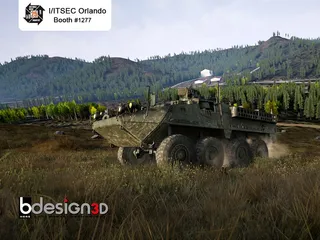A Brief History of Past NASA Space Program Simulators
Contact Our Team
For more information about how Halldale can add value to your marketing and promotional campaigns or to discuss event exhibitor and sponsorship opportunities, contact our team to find out more
The Americas -
holly.foster@halldale.com
Rest of World -
jeremy@halldale.com

Chuck Weirauch takes a closer look at past NASA space program simulators.
Mercury
As NASA began development in 1959 of the first US manned spaceflight system, Project Mercury, it soon became clear that the goal to put a man in space, due to its complexity and the need for safety, could not be accomplished without the extensive use of simulators for flight crew training. As a result, the space agency incorporated both the Project Mercury flight simulator that replicated the full-scale Mercury capsule built by the McDonnell Aircraft Corporation, with all the switches, gauges, dials and controls as the actual spacecraft. The Mercury procedures trainer was also developed, beginning the tradition of having both full-function, high-fidelity, fixed and part-task trainers that has continued for all later space programs, from Gemini through to today’s Artemis Program.
Gemini
While the Mercury Project simulators could accomplish their mission with analog computers, the following, more complex Gemini Program could not rely only on just this technology and required the use of digital computation as well. The Gemini program also required motion-base simulators to replicate spacecraft docking and rendezvous maneuvers that needed to be developed and tested as a prelude to the Apollo Program. The McDonnell-Douglas Corporation was the prime contractor for the Gemini simulators, with the Link Division of the Singer Corporation providing the digital computers.
Along with two Gemini mission simulator space capsule flight crew trainers, the Gemini Program included the motion-base Rendezvous Docking Simulator and the Gemini Dynamic Crew Procedures Simulator as well. The Gemini Program pioneered spacecraft Earth-orbital docking missions as a predecessor to the Apollo Program. Docking the Apollo spacecraft with the Apollo lunar lander while in orbit prior to the journey to the Moon was critical to the success of the Apollo lunar landing missions.
Apollo
The application of simulators to flight crew training hit its stride during the Apollo Program, with a total of 15 devices. They included the Apollo Mission Simulator; the Command Module Simulator, Lunar Module Mission Simulator, the POGO Partial Gravity Simulator; Dynamic Crew Procedures Simulator; the Water Emersion Simulator; and even an Apollo Guidance Computer Simulator for the guidance computer on the actual Lunar Lander that enabled successful lunar landings. While references could not be found for the manufacturers of all the Apollo Program simulators, Singer-Link was the primary Apollo simulator provider.
Apollo flight crews trained for the Apollo missions for a total of more than 30,000 hours in the devices during the program, which ran from 1963 to 1972. The last six (Apollo 11 through 17) missions featured a successful lunar landing, with the exception of Apollo 13. The Command Module Simulator and the Lunar Module Mission Simulators at Johnson Space Center played a critical role in the return of the Apollo 13 crew to Earth after an oxygen tank explosion during the outbound phase of the flight caused that mission to be aborted. Mission Control personnel used those devices to help them develop emergency procedures that led to the safe return.
While the dedicated crews understood the need for such extensive and sometimes exhaustive training, it has been reported that Apollo 11 Command Module Pilot Michael Collins might have left the space program because of it. “I’m sick of being in simulators,” Collins was at one time overheard to say.
Space Shuttle
The Space Shuttle Program brought the first fully digital, motion-base full flight simulation technology into the US space program for the first time, with Link again being the lead Shuttle simulator developer and provider. The Shuttle Mission Simulator (SMS) actually consisted of three separate simulators, one a low-fidelity mockup of the Shuttle mid-deck, a fixed-base simulator known as the Guidance and Navigation Simulator, and the full-motion simulator. Because of the complexity of the Space Shuttle Main Engine, an engineering simulator was created for testing and the design and development of hardware changes and modifications.
NASA administrators had previously decided to keep Space Shuttle Program costs under control, limiting the number of simulators that could be developed for crew training. All Shuttle simulators were located at Johnson Space Center. As the program expanded, traditional part-task trainers were replaced with personal computers with touchscreen displays.
The Shuttle Avionics Integration Laboratory (SAIL), which was first constructed in 1968, was considered to be one of the largest engineering simulators ever built, in that it was the size of the Shuttle Orbiter itself. It contained all the avionics systems of that spacecraft and was used to test and certify all the changes of the orbiter avionics systems throughout the Shuttle program’s 30-year timeline, with the first flight in 1981 and the last in 2011. The SAIL featured a replica of the fully instrumented Orbiter cockpit.


